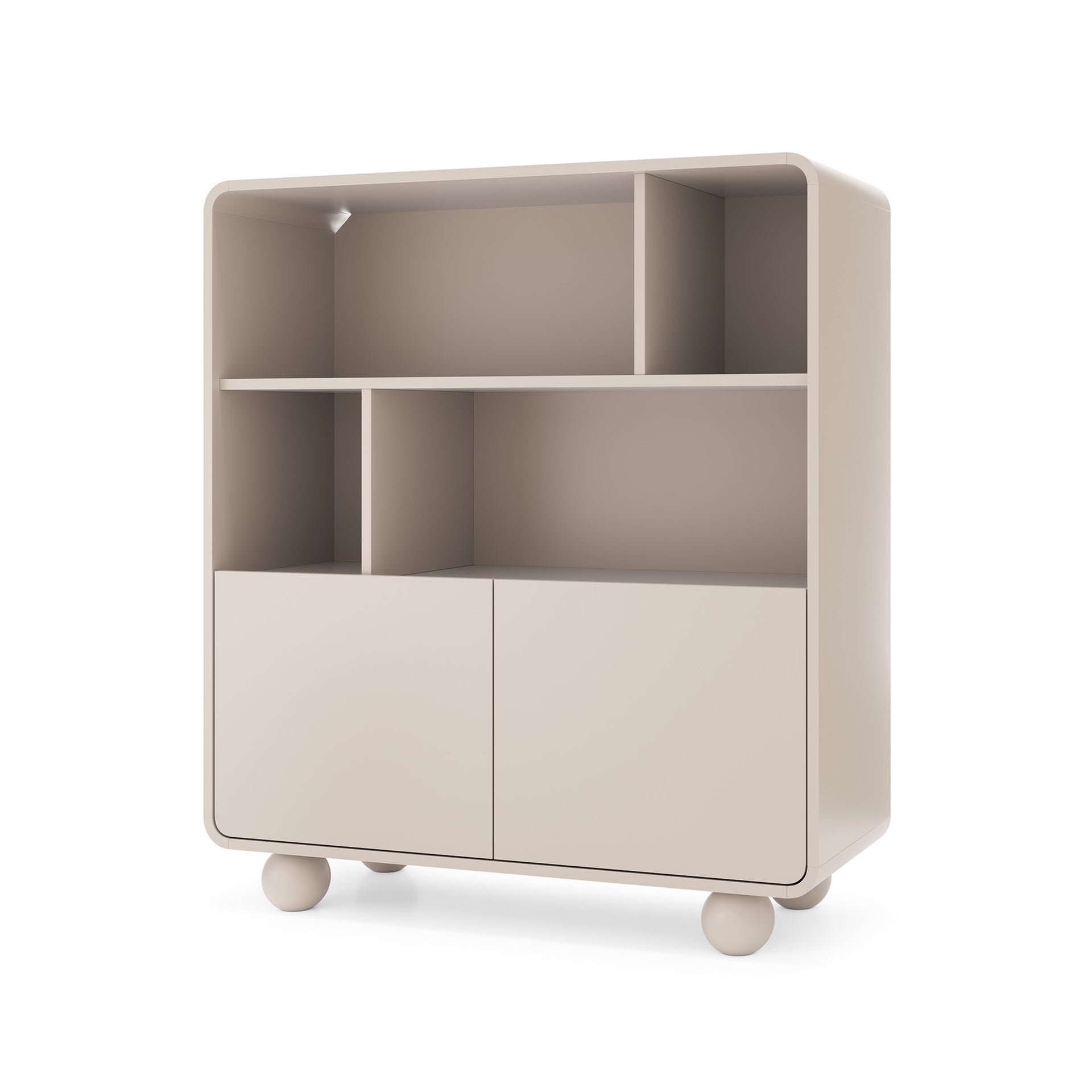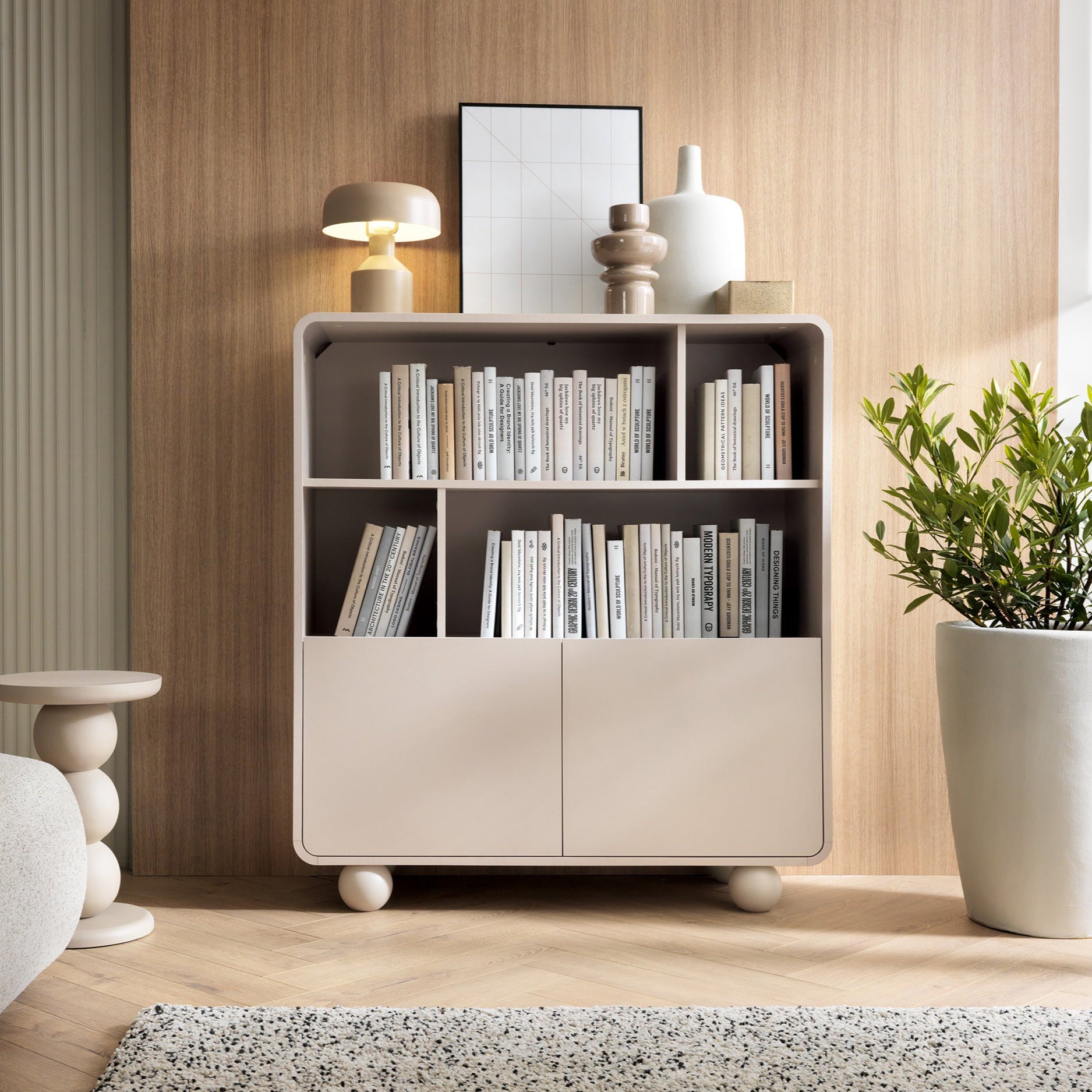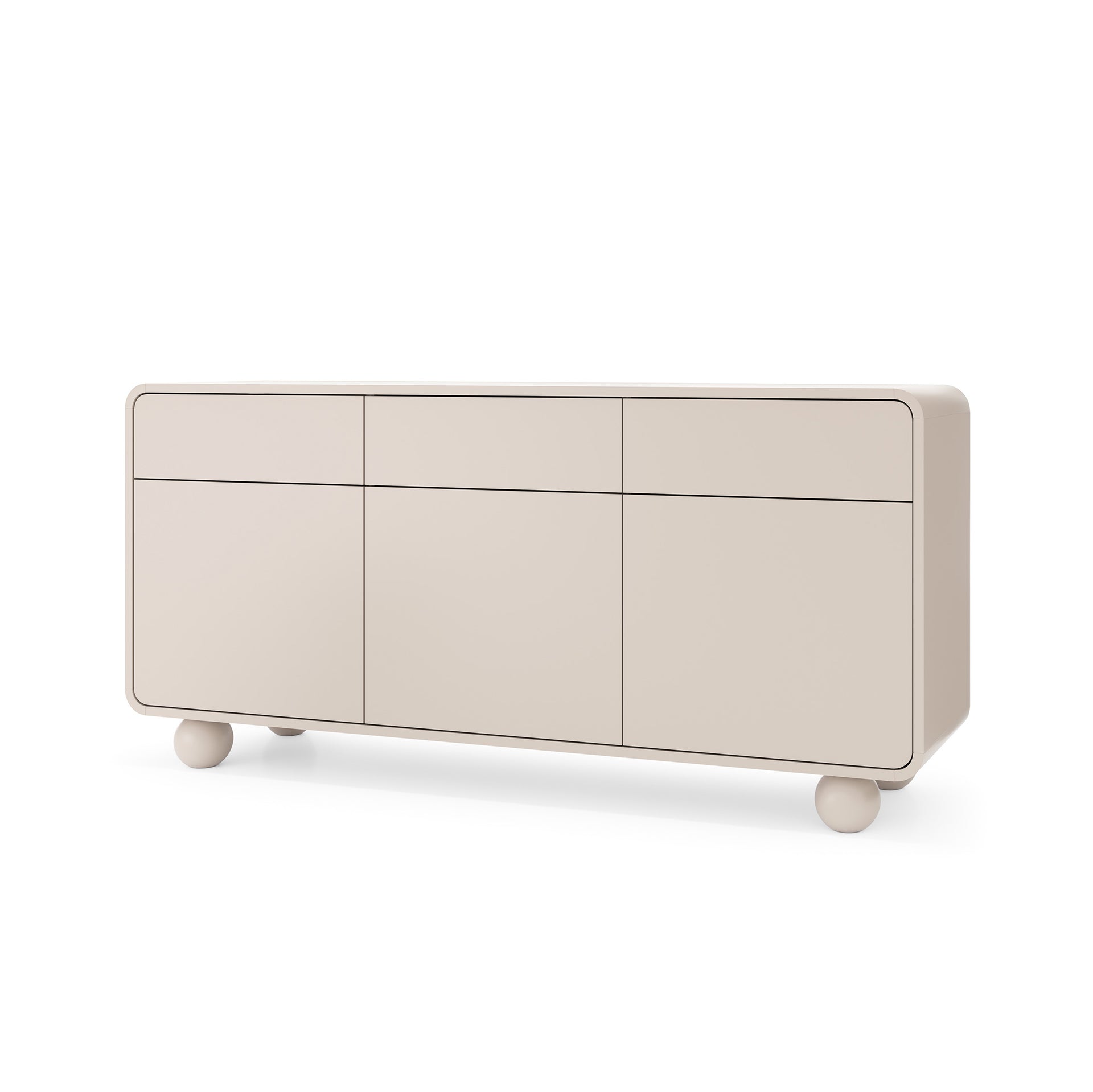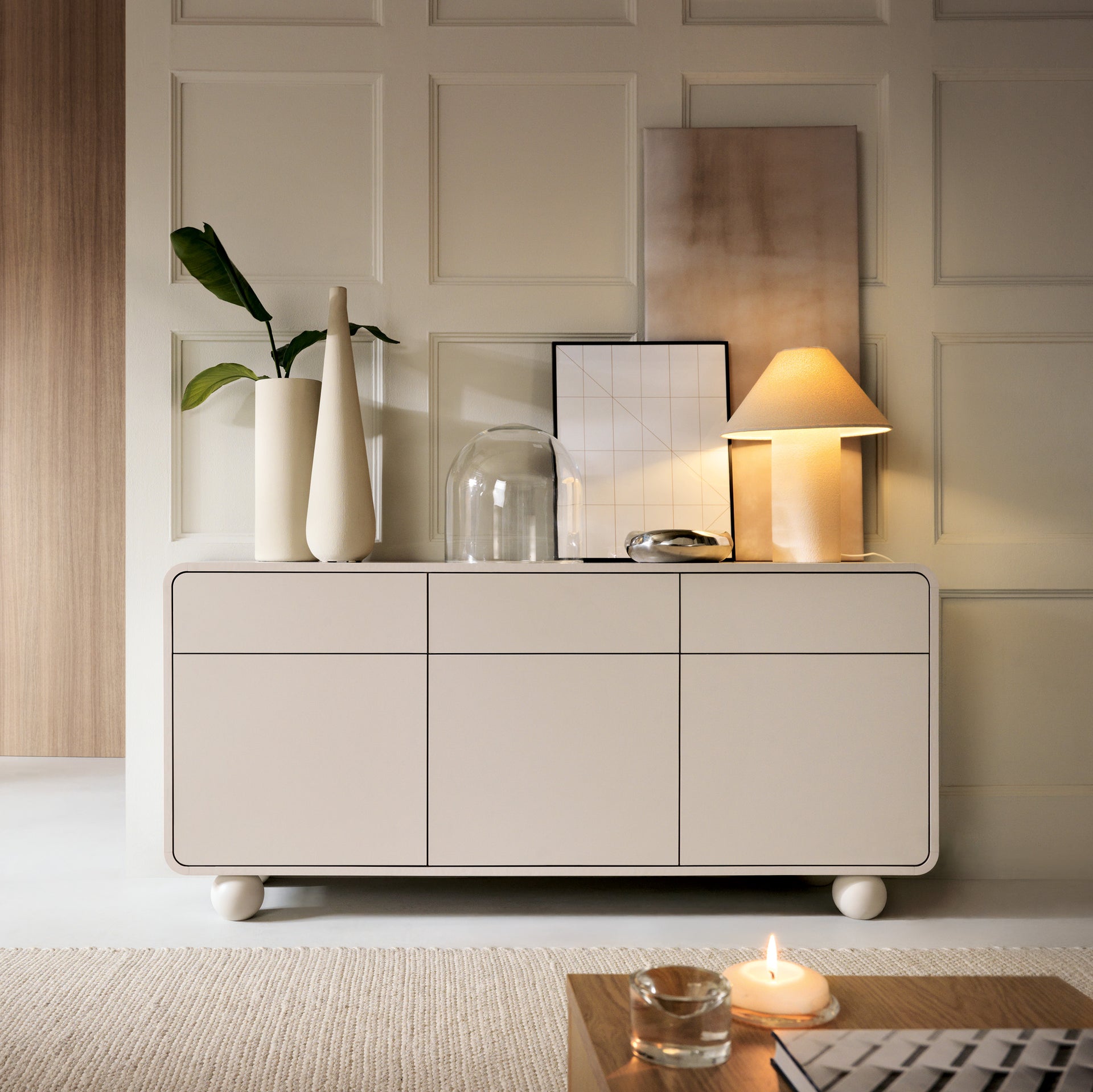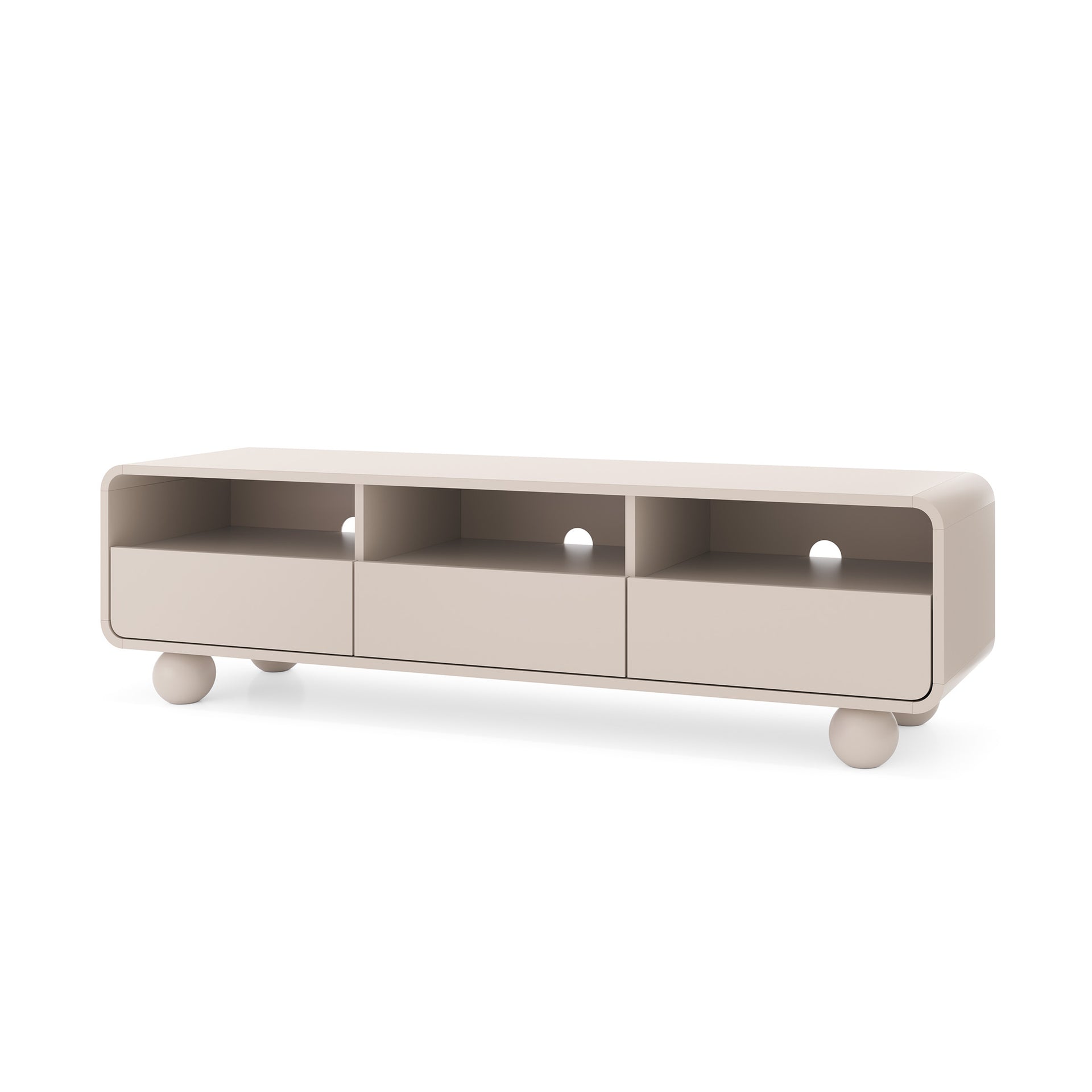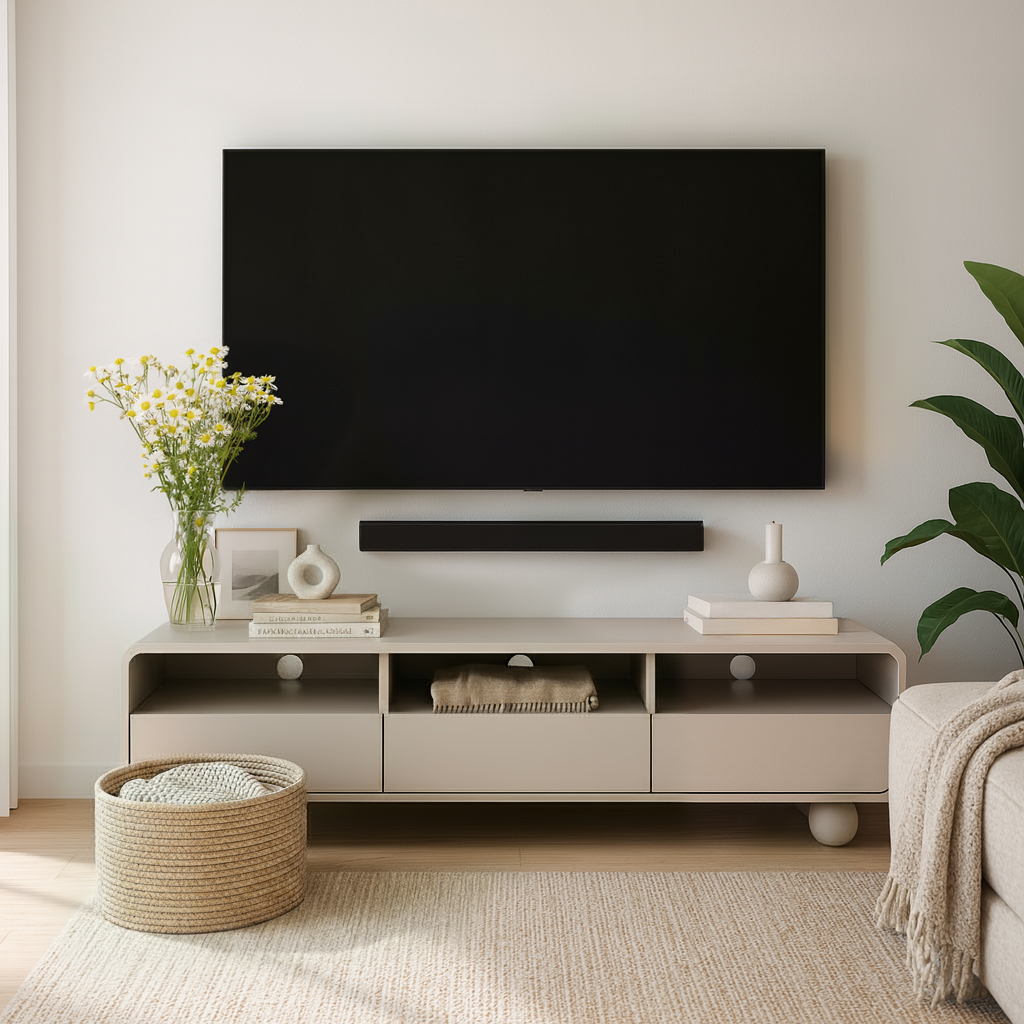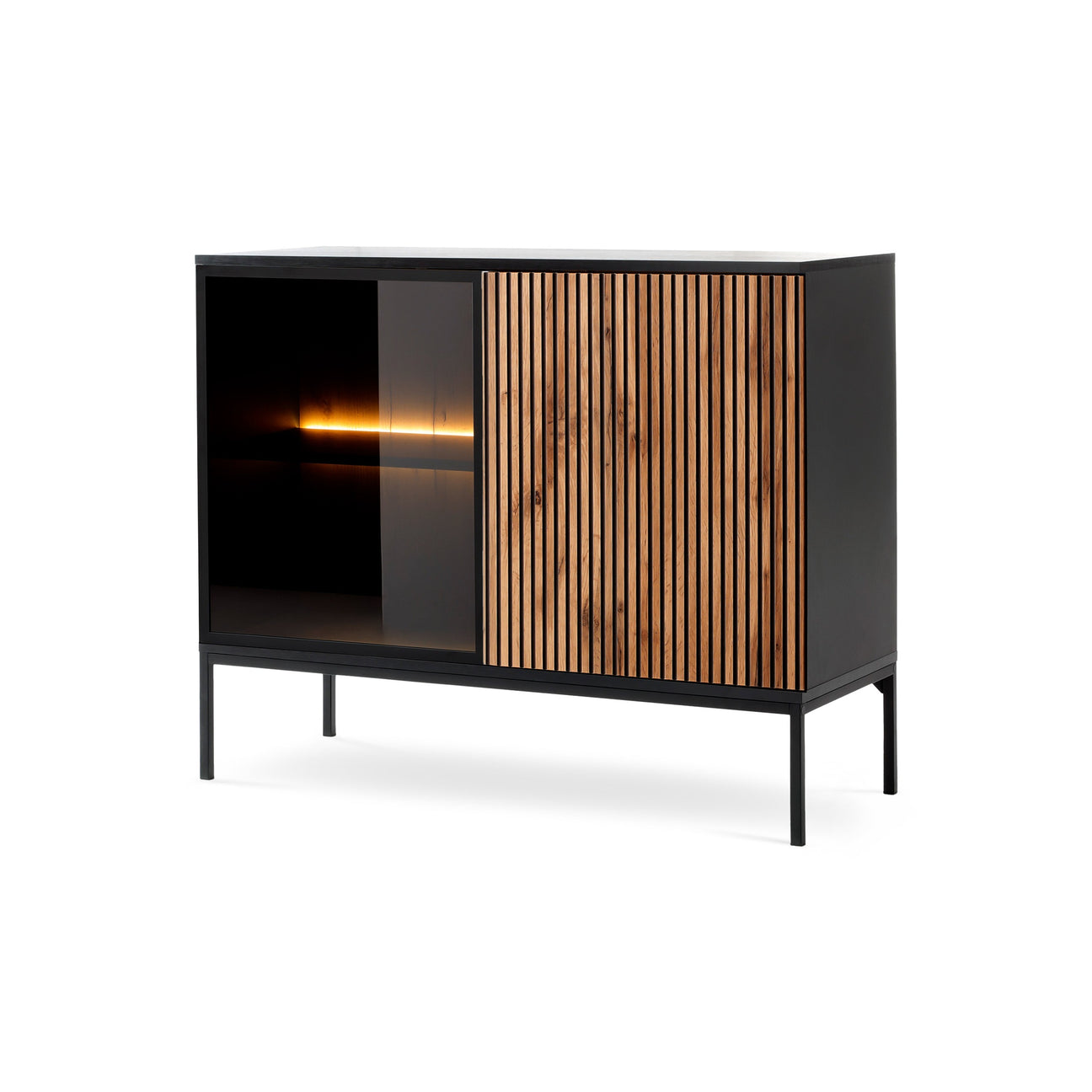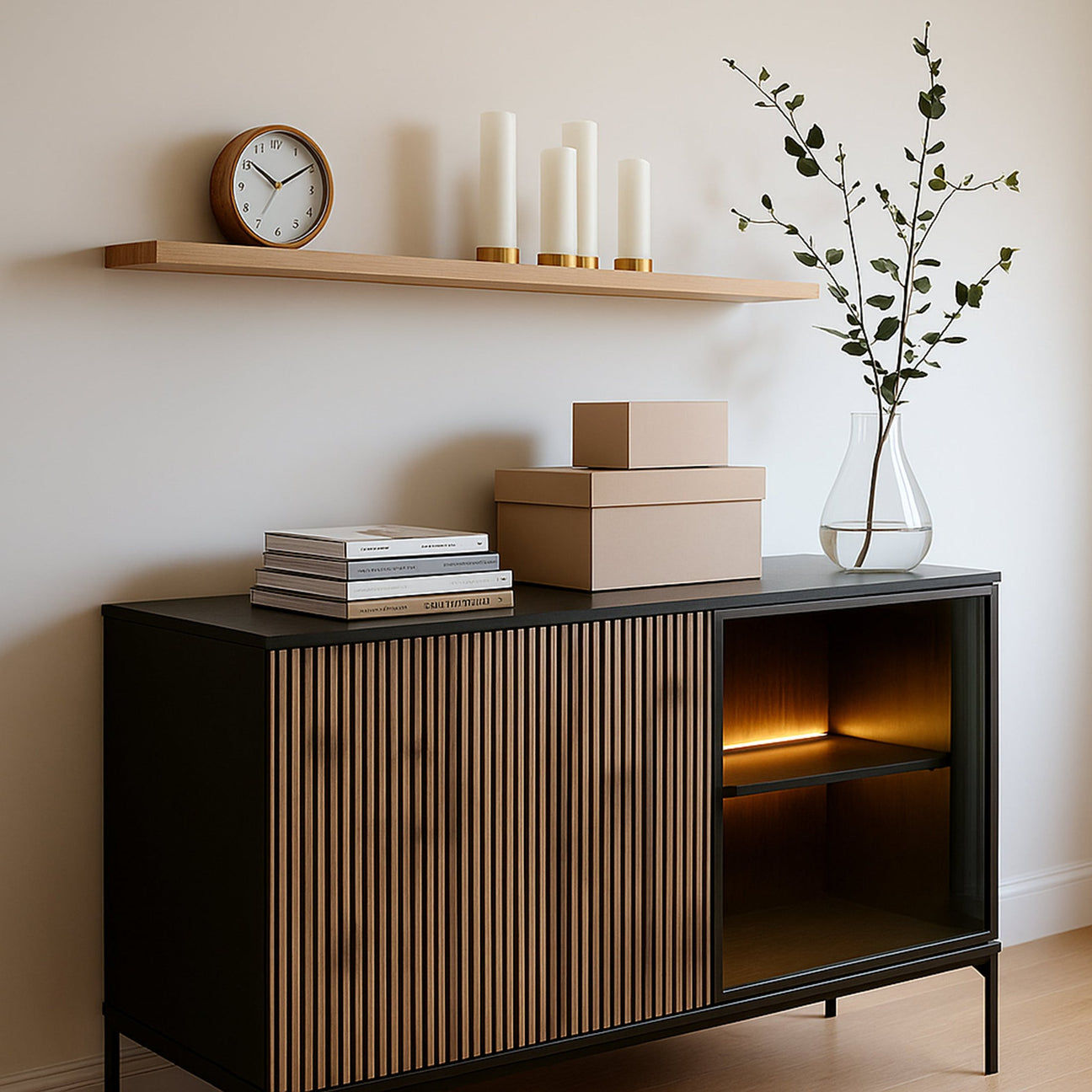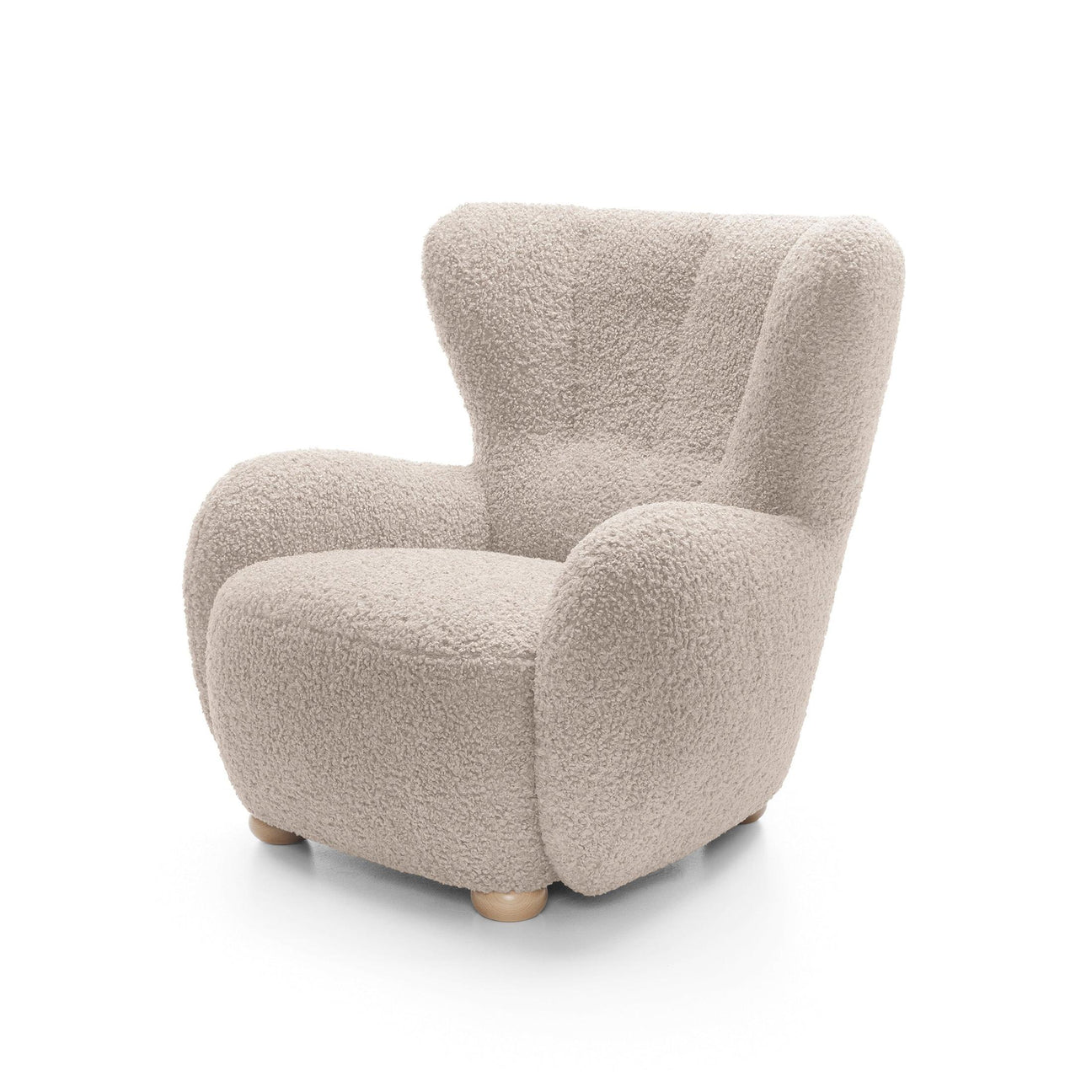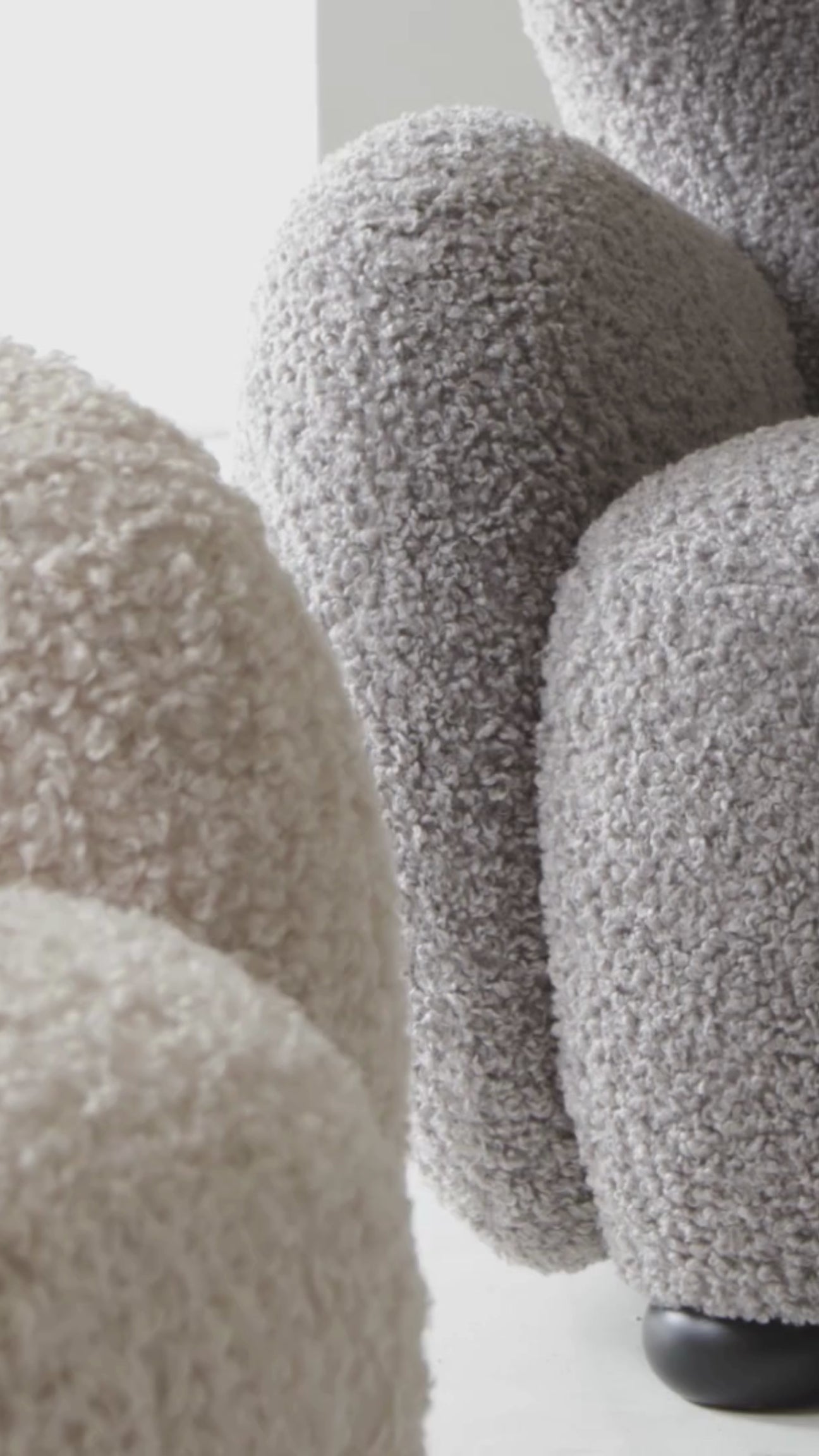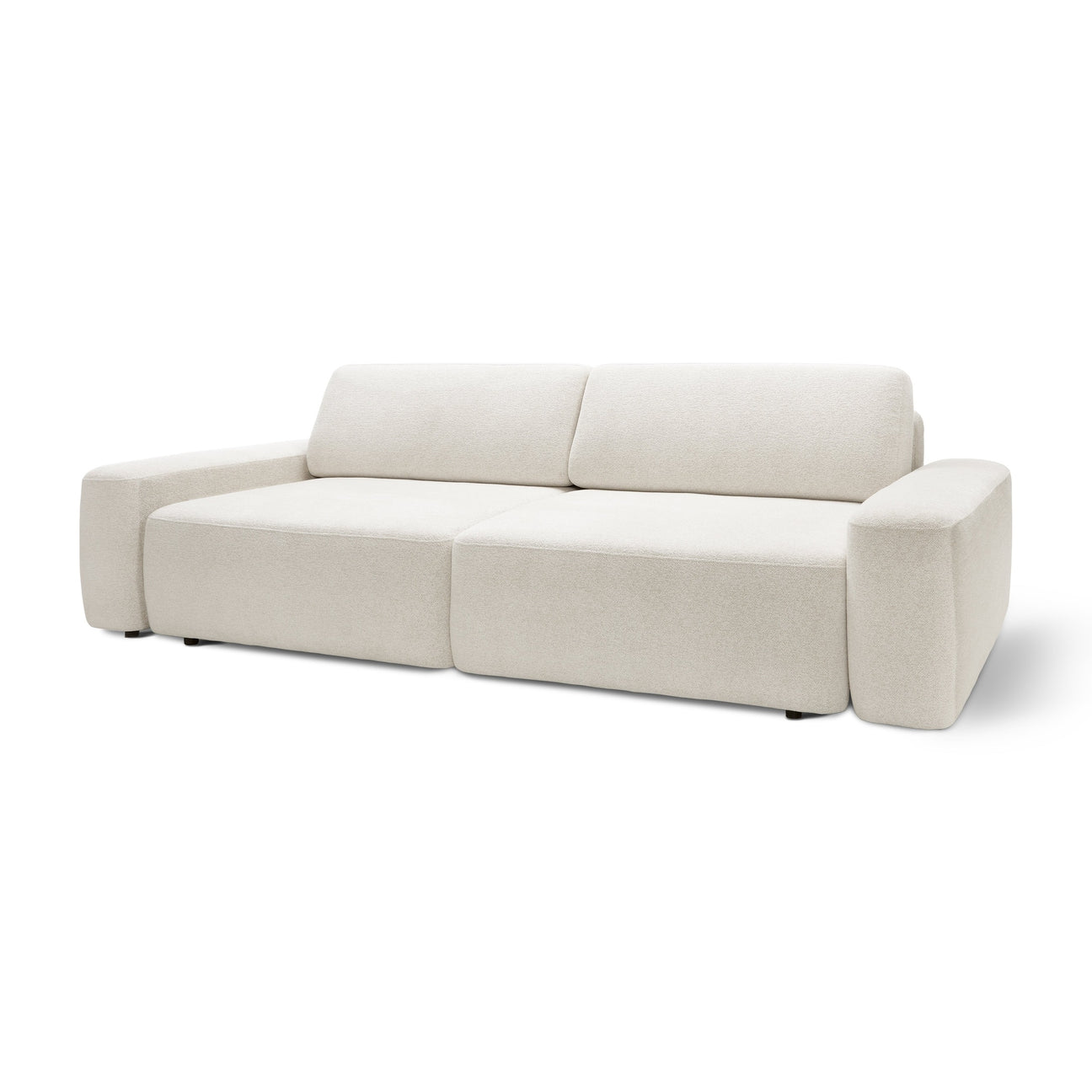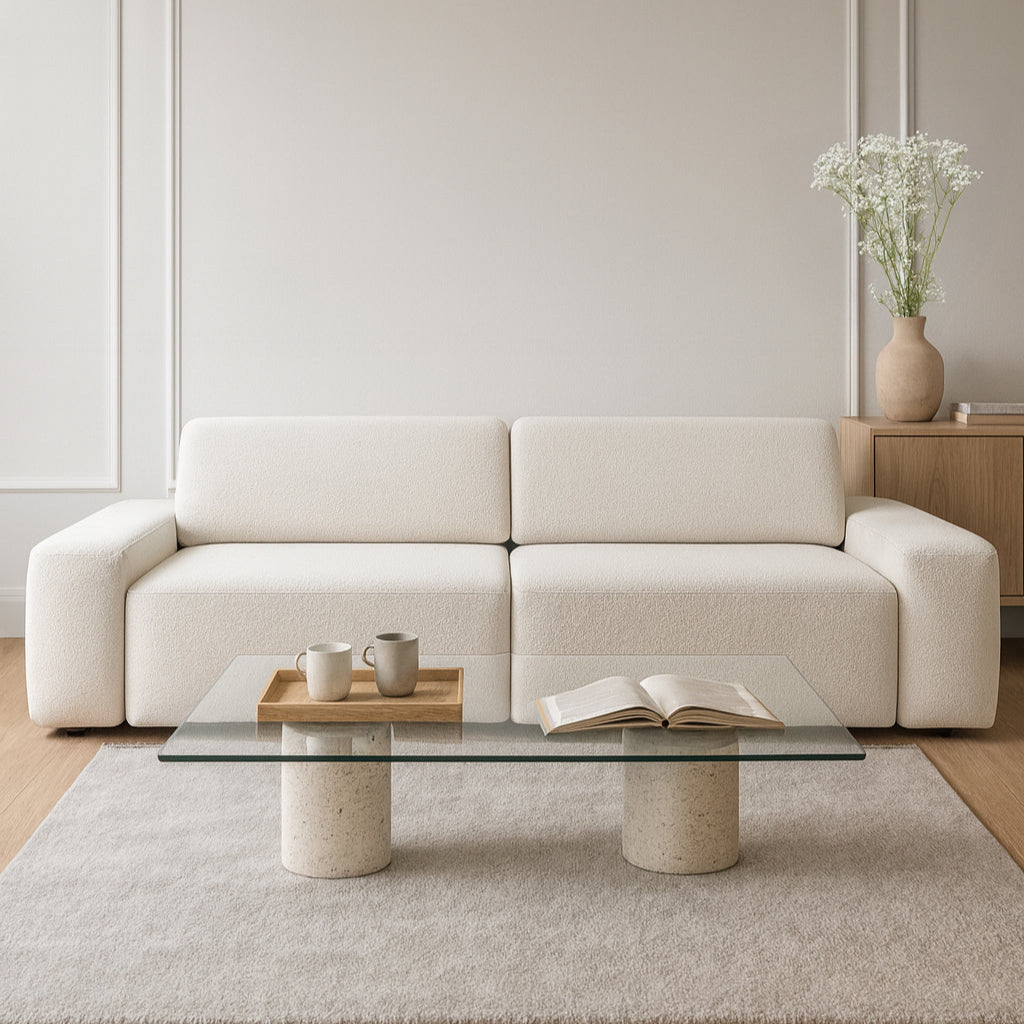Do you remember your childhood room? The one with the Spice Girls or Dragon Ball Z poster on the wall, the desk cluttered with Pegasus cassettes and notebooks with crisp stickers? Maybe you were lucky enough to have your own room, or maybe you shared a space with siblings – a bunk bed was a dream back then, and your own bookshelf for books and CDs is a luxury. Today, as parents, you face the challenge of creating a room for your children. And suddenly all those memories come flooding back – what was nice, what was missing, what you'd like to change. At Pillovely, we believe that the best children's room is one that combines security with the magic of childhood. Because your child is someone special who deserves a space equally unique.
The Game Boy Generation Designs for the iPad Generation
We, parents raised between Family Guy and MTV, between Harry Potter books and our first text messages, have a unique perspective. We know what it's like to grow up both analog and digital. Our children are born into a world where Alexa answers questions and YouTube replaces cartoons on VHS tapes. But does that mean a child's room has to look like a sterile laboratory filled with gadgets?
Absolutely not. The best children's rooms are those that combine what was beautiful about our childhood (imagination, space to play, coziness) with what modernity has to offer (safety, functionality, smart technology).
Furniture – the foundations of a child's kingdom
Bed – command center
Remember when a bed was everything? A pirate ship, a castle, a rebel base from Star Wars? Today, children's beds are little marvels of engineering.
A bed that grows with your child (ages 3 to 12) – a brilliant invention. It extends and adjusts to your child's height. No more buying a new one every three years. It's like Pokémon evolution – it changes with your child.
A four-poster bed – for little princesses and princes. But not an overly sweet pink nightmare. Modern versions feature minimalist frames that can be draped with tulle, LED garlands, or even a mosquito net. Universal and timeless.
Bunk beds 2.0 – not the kind we saw in our childhood, where the top person would wake the bottom with every movement. Modern bunks are stable, often with a desk or play area below. Like a transformer – more functions, less space.
The house bed – a recent hit. The house-shaped frame can be decorated and hung with lights. It creates a sense of personal space. Like a fort made of chairs and blankets, only more durable.

Desk – from the first scribbles to e-learning
Our desks remember Bambino crayons, fruit-scented markers, and our first essays. Today, desks must accommodate a tablet, books, and experiments with slime.
An adjustable desk that grows with your child (height 50-75 cm). The tabletop tilts like modern school desks, only prettier. An investment that will last for years.
A desk with a built-in shelf – bookshelves, compartments for accessories. Like the wall unit from our childhood, only in a mini version and without Grandma's crystals.
A gaming desk for an older kid – yes, that moment is coming. LEDs, cable management holes, a shelf for the controller. But set the rules, or it'll be like us playing Heroes III at night.
Wardrobe – more than just a wardrobe
Remember your childhood wardrobes? Creaking doors, sagging shelves, hangers too high? Modern children's wardrobes are in a different league.
A modular wardrobe – you can rearrange shelves and add drawers. Like LEGO bricks, only more practical. It adapts to your needs – more space for toys for a toddler, more hangers for a teenager.
A closet with a mirror – but not one that covers the entire door (remember the fear of "Nightmares on Elm Street"?). A small mirror at child's height – for changing into superhero costumes.
The Montessori system – a low wardrobe where the child can reach for clothes themselves. It teaches independence. We had everything too high and had to ask parents – frustration level max.

Storage – no more chaos (in theory)
Containers and boxes – LEGO has its own home
Remember the pain of stepping on a LEGO brick? Or searching for that one specific figure in a sea of toys? Good storage is essential.
Transparent boxes – you can see what's inside. No more tipping everything over looking for a specific toy. Like saving in a game – you know where you left everything.
Fabric baskets – soft, safe, and attractive. You can throw toys from afar (every child's national sport). Choose ones with handles – they're easier to carry.
Hanging organizers – for small treasures. Remember hiding stickers, Pokemon cards, or Turbo chewing gum wrappers? Now kids have special pockets for them.
The Kallax shelving unit from Ikea – a classic. Boxes slide into grids. Each toy category has its own space. Like waste sorting, only more enjoyable.
Shelves – a gallery of treasures
Picture ledge shelves – shallow, for books with the covers facing forward. The child can see what they choose. We searched for books by their spines – mission impossible for someone who can't read.
Shelves in shapes like clouds, houses, and mountains. A decoration in itself. Like the wall stickers from our childhood, only 3D and practical.
Shelves for collections – for figurines, models, treasures. Remember how you used to keep your Kinder Surprise collection? Now they can be displayed like a museum piece.
Safety – because PlayStation didn't teach us how to fly
Furniture protection
Rounded edges are standard. Sharp angles are a relic of the past. Like games without a save option – once commonplace, now unimaginable.
Anti-slip pads – under carpets, under furniture legs. Remember how the carpet used to "slide" around while you played? No more.
Wall mounts – tall furniture, shelves. An earthquake while playing Godzilla can't end in disaster.
Drawer safety features – for little ones. Pinched fingers are a generational trauma. Soft-close is standard, locks are for younger children.
Child-friendly materials
VOC-free paints —no toxins. Our rooms were painted with whatever was available. Now we have a choice—our child's health is our priority.
FSC- certified wood and safe varnishes. No more "splinters in the butt" from cheap furniture.
Anti-allergic fabrics – easy to clean. Orange juice, marker marks – a must-have. Like the Nokia 3310 among fabrics.
Lighting – more than just a night light
Main light
Ceiling lights instead of chandeliers – safer for balls and flying toys. Remember the sound of a ball hitting a chandelier? And then Mom screaming? It's better to be safe than sorry.
The dimmer switch is a game changer. From bright light for studying to cozy twilight for reading. Like adjusting the brightness on a Game Boy, it's an essential feature.
Night lamp – guardian of dreams
Remember fear of the dark? Monsters under the bed? A good night lamp is a must-have.
Battery-powered LED lights – safe, don't get hot. They're huggable (some children do).
Star Projector – the sky in your room. Like those glow-in-the-dark stickers from our childhood, only better.
Smart lights – app-controlled, color-changing. You can set a timer and dim them. The future is now.
LED garlands – magic available
Cotton balls, stars, and lanterns create ambiance. Like a Christmas tree, only year-round. Battery- or USB-powered – safe and cool.

Textiles – softness without compromise
Carpet – a playground
Remember those carpeted streets for playing with cars? They're still there! But now we also have:
Sensory carpets – different textures stimulate the senses of little ones.
Educational rugs – alphabet, numbers, world map. Learning through play, like educational games on Pegasus.
Easy-to-clean rugs – machine washable. Because kids are little tornadoes with juice in hand.
Curtains – light and sound control
Blackout curtains . For kids who wake up with the dawn (which is everyone).
Soundproof curtains – they muffle noise from outside. And from inside – your neighbors will be grateful.
Day/night blinds – adjust the amount of light. Like an equalizer on a stereo system – you adjust it to your needs.
Bedding – sweet dreams
100% cotton – breathable and gentle on the skin. No synthetic fibers like in '90s bedding.
Universal patterns – not just princesses and cars. Geometry, nature, space – grow with your child.
Anti-dust mite bedding – for allergy sufferers. Because a runny nose is not a fun addition to childhood.

Decorations – where the magic happens
Walls – the canvas of imagination
Reusable stickers – easy to reuse, won't damage walls. Remember tearing off posters and leaving a hole? Problem solved.
Blackboard/magnetic wallpaper – a wall for creativity. Like a blackboard at school, only at home and without chalk.
Art gallery – frames, ropes with clips. Every drawing is important. We had a fridge, kids can have an entire wall.
A photo shelf – shared memories on display. But not just family ones – also those with friends, from trips. Building identity.
Accessories with character
A teepee tent – your own sanctuary. Like building a base out of blankets, only more durable.
Beanbags – for sitting, lying, throwing. They'll withstand anything. Like a punching bag, only more comfortable.
Treasure baskets – shells, stones, sticks. Remember your "treasures"? Children collect them too.
Desk organizer – organize your supplies in one place. No more searching for that one specific pen.
Hobby Zone – a space for passion
Art corner
Children's easel – adjustable height. For little Picassos.
An organizer for art supplies – crayons, paints, glue. Everything is within reach, nothing gets lost.
A protective mat – for the creative zone. Because paints have a tendency to end up everywhere.
Music Corner
Instrument stand – guitar, keyboard, ukulele. Music at your fingertips.
Acoustic panels – decorative and practical. Your neighbors will appreciate your attempts at drumming.
Reading Corner
Armchair /Pouf – a comfortable seat. Like our gaming chair, only for reading.
A good lamp – directional, adjustable. Eyes are not joysticks – they need to be cared for.
A shelf for your current reading material – within easy reach. It encourages you to reach for a book.

Technology in the Room – Balance is Key
Computer station
Yes, the moment is coming. But be smart:
A monitor at the right height – ergonomics from a young age. We had CRTs everywhere – children might have it better.
An adjustable chair with support. Slouching in front of the computer is a common affliction – let the children avoid it.
Desk lighting – bias lighting behind the monitor. Eye strain is not cool.
Charging gadgets
Charging station – one place for all your devices. Order and control.
Socket timer – automatic shutdown at night. Technology sleeps with your baby.
A room that grows with your child
0-3 years: Safety and stimulation
-
Baby cot with railing
-
Changing table (then shelf)
-
Sensory mat
-
Toy basket
-
Cry sensor lamp
Ages 4-7: Creativity and Learning
-
"Adult" bed with railing
-
First desk
-
Picture book shelf
-
Fun zone
-
Chalkboard/wall
Ages 8-12: Hobbies and Science
-
Desk for doing homework
-
Shelves for collections
-
A place for friends
-
More privacy
-
First own style
13+: Teen Space
-
Relaxation zone (armchairs, poufs)
-
Larger desk
-
Full-size mirror
-
Audio system
-
Maximum personalization

Budget – Spending Wisely
Where not to save:
-
Bed and mattress (healthy sleep is essential)
-
Desk and chair (spine bow)
-
Lighting (eyes are meant to last a long time)
-
Paints and materials (health first)
Where you can save:
-
Decorations (can be DIY)
-
Containers (shoe boxes work too)
-
Textiles (chain stores have nice stuff)
-
Accessories (second hand, exchange with other parents)
The biggest mistakes – what to avoid
Mistake #1: A room that's "too big." A three-year-old feels lost in a teenager's room. Adjust the size appropriately.
Mistake #2: Over-sweetening/over-childishness. Pink princesses and blue cars aren't the only options. Children have different tastes.
Mistake #3: Lack of space for play. A room cluttered with furniture is no child's room. Leave room for imaginative adventures.
Mistake #4: Ignoring a child's opinion . Children have preferences from the age of 3-4. Ask, listen, and take them into account.
Mistake #5: Perfectionism. A child's room is meant to be used, not photographed for a catalog. Stains, scratches, marks—that's part of the story.

DIY – a personal touch
Gallery of memories
String, clothespins, photos from trips, drawings. Like our "wall of fame" posters, only more personal.
Painted furniture
Old furniture + chalk paint = new life. Together with your child – fun and savings.
T-shirt pillows
Favorite, outgrown T-shirts transformed into pillows. Sentiment + functionality.
A cardboard house
Big box + paint + imagination = hours of fun. Like building a base, only better.
Summary – A Room Full of Love
The best children's room isn't one from a catalog or Pinterest. It's a room where a child feels truly themselves. Physically and emotionally safe. A space for play, learning, rest, and dreaming.
We, a generation raised between the analog and digital worlds, have a unique opportunity to give our children the best of both worlds. The coziness and magic of our childhood combined with the opportunities and security of modernity.
Remember: a child's room isn't an investment in furniture. It's an investment in memories. In 20 years, your child won't remember whether the bed was from Ikea or a boutique. They'll remember feeling loved, safe, and free to be themselves there. It's where we learn that home isn't a place—it's a feeling. And the best thing we can give children is a space that says, "Here you can be yourself. Here you are loved. Here you can grow."
Be sure to browse Pillovely's offerings and choose the perfect pieces for your little one's room. Now go out and create a room your child will tell their children about. Just as you talk about your own rooms – with nostalgia, warmth, and a smile. Because the best children's rooms are the ones that stay in your hearts forever.


